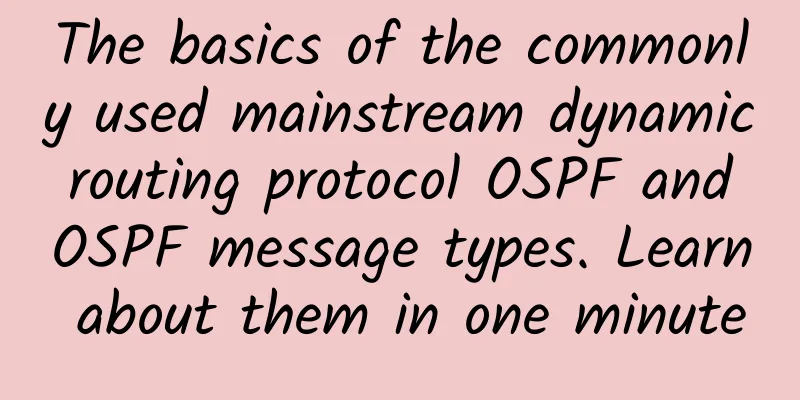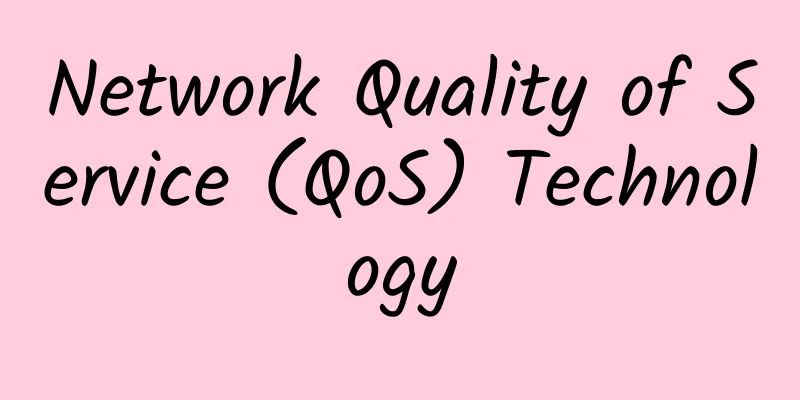The basics of the commonly used mainstream dynamic routing protocol OSPF and OSPF message types. Learn about them in one minute

|
1. Basic Concepts of OSPF OSPF is based on IP protocol, protocol number 89 (1) Open Shortest Path First (OSPF) is a link-state-based interior gateway protocol developed by the IETF. (2) OSPF is a link-state based protocol with the advantages of fast convergence, loop-free routing, and scalability. It has become an excellent internal gateway protocol and has been quickly accepted and widely used. (3) OSPFv2 is based on IPv4 and its scalability is based on LSA extensions. If it is to be used in other networks, it must be redeveloped, such as OSPFv3 in IPv6. (4) Based on the IP protocol, reliability cannot be guaranteed, so it is necessary to implement its own confirmation mechanism and authentication mechanism. (5) Based on the IP protocol, as IP becomes more popular, OSPF has become a mainstream IGP protocol, generally used in enterprise networks, and engineers in enterprise networks are more familiar with it. 2. OSPF Message Types Each OSPF message consists of an OSPF header plus an OSPF payload. OSPF supports multicast message transmission, where 224.0.0.5 is the IP multicast address reserved for OSPF devices, and 224.0.0.6 is the IP multicast address reserved for OSPF DR/BDR devices.
3. Hello Message Used to discover, establish and maintain neighbor relationships:
4. DD message Describes the summary information of LSDB
5. LSR Message The LSA used for requesting a response contains the three elements of the requested LSA. 6. LSU message LSA used to request updates from neighbors, containing the actual LSA. 7. LSACK Message Used to confirm the received LSA and only contains the summary information of the LSA. |
Recommend
From 0G to 5G: How we got here and where we are going
Ah…the beauty of wireless convenience. Thanks to ...
Interesting DHCP chat
[[386236]] In this article, we will talk about th...
Five communication methods between processes required for interviews
Inter-Process Communication (IPC) refers to the t...
VMISS Hong Kong VPS 30% off annual payment from 75 yuan, 20% off for all Korea/Japan/Hong Kong CN2/Los Angeles CN2 GIA/9929/CMIN2 optional
VMISS is offering special discounts during the Ch...
What is the difference between Cookie and Session in HTTP protocol?
HTTP is a stateless protocol, that is, each time ...
5G: The need for better security
5G is 100 times faster than today’s mobile 4G, an...
How will the broadband market change after private enterprises withdraw? Mergers and reorganizations may be inevitable
Recently, the former fourth largest broadband acc...
[Closed] Arkecx 40% off, Hong Kong/Taiwan/Japan/Korea/USA etc. starting from $72/year
[Updated in August 2023] Please note that the off...
It's no big deal for the three major operators to withdraw from the US
After several twists and turns, China's three...
.com domain prices expected to rise for first time in eight years
According to foreign media reports, ICANN, the or...
Huawei and its medical industry partners promote 5G smart medical integration cooperation
In order to further respond to the national new i...
ZJI: Hong Kong Kwai Wan independent server 450 yuan/month from 450 yuan/month, E3-1230/16G memory/480G SSD/CN2 line
ZJI has launched this month's regular promoti...
How wireless technology will improve connectivity, efficiency and consumer experience in 2024
In 2024, wireless technology is expected to bring...
Detailed explanation of remote method invocation RMI, which is very similar to the idea of RPC
[[268642]] Definition of RMI RPC (Remote Procedur...
80VPS: VPS hosting starts at 199 yuan per year, with options for Los Angeles/Hong Kong CN2/Japan CN2/Korea BGP, etc.
We have shared the information of the cluster ser...









